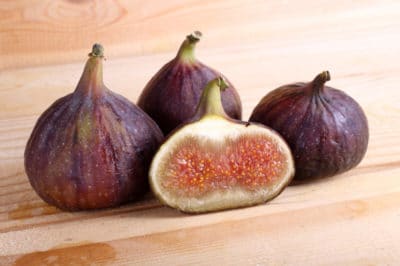Growing Figs
Edible figs can be grown in USDA Zones 5 through 11 if you select the right varieties. They need at least eight to 10 hours of full sun daily. Not fussy about soil, they are drought tolerant and long-lived with the right care. Figs produce two crops – an early breba crop on last year’s growth and a main crop from new season growth. The fruit must ripen on the tree.
Edible Fig Varieties
You can choose from over 100 different edible figs. Here are a few:
- Texas Everbearing – good fresh, dried and preserved.
- Black Mission – eat fresh, dry or can.
- Conadria – use fresh or dried.
- Desert King – best eaten fresh.
- Ischia – less likely to attract birds.
- Janice Seedless Kadota – suited for coastal climates.
Canning Figs
Always follow tested recipes for canning. Unlike many fruits, figs are low in acid and require lemon juice or citric acid for proper preservation. Use whole, washed, unpeeled fruits with the stem attached. Figs are best canned in light syrup to preserve color and texture. Do not pressure can – a water bath is the only tested method.
Drying Figs
Figs have been dried for centuries. Choose only fully-ripe figs. Small figs can be left whole, but larger figs should be cut in half. Whole figs should be checked by dipping in boiling water just until the skins split; immediately plunge into ice water and drain well. Dry on trays covered with cheesecloth in full sun or in a dehydrator. Store in glass jars or plastic bags.
Freezing Figs
Freezing is the quickest way to store your fig harvest. Wash the whole figs and place in containers. Pour a cold 40 percent syrup to which you have added citric acid or lemon juice over the figs. Cover the fruit completely. You can also dry pack – dip into lemon juice or citric acid solution then pack into containers or freeze on trays before packing.
Making Fig Preserves
Figs can be preserved in brandy – an old-fashioned but popular method. Follow a tested recipe. Basically this process uses washed whole figs with the addition of some citric acid or lemon juice. The fruits are cooked in a sugar and brandy syrup, ladled into jars and filled with hot syrup, then processed in a boiling water bath.
